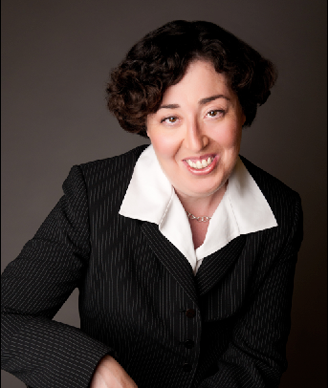Why Can’t Every Month Be Breast Cancer Awareness Month?
Breast Cancer Awareness Month is a magical time that brings out the child in each of us. You can keep your Santa Claus and your Tooth Fairy, I believe in the warm and fuzzy feeling of breast cancer awareness.
Katherine O’Brien

Earlier this year, a UK-based group for people with pancreatic cancer launched a print advertising campaign incorporating an audacious tagline: “I Wish I Had Breast Cancer.” At first I was shocked. But the more I thought about it, I had to agree that the grass does look greener in our glorious pink universe, especially at this time of year.
Pancreatic cancer is particularly cruel-it is almost always detected at an advanced stage, with survival generally measured in months. If you read The Emperor of All Maladies, you may recall that Siddhartha Mukherjee’s book ends with a reflection on the evolution of cancer treatments, from ancient Egypt to 2050 AD. “[Now] give Atossa metastatic pancreatic cancer in 500 BC,” wrote Mukherjee. “Her prognosis is unlikely to change by more than a few months over 2,500 years.”
The median survival time for someone with metastatic breast cancer is 18 to 24 months. I suppose that is “better” than a metastatic pancreatic cancer diagnosis, but I’m not sure that makes it any easier for the patients or their families.
Unlike pancreatic cancer, some breast cancers can potentially be detected early. Unfortunately, early detection is not a cure. Most of the 155,000 US people currently living with metastatic breast cancer were originally treated for early-stage breast cancer-but their cancer came back 5, 10, 15, and even 20 years later-even though many of them took excellent care of themselves and had regular mammograms and other follow-up care as their doctors directed. This is not a popular message during October, or really any of the other 11 months of the year.
But thanks to the “I Wish I Had Breast Cancer” campaign, the scales have fallen from my eyes and I am embracing my chaotic cellular activity. I am 100% “breast cancer 4 life” and let me tell you, it is fantastic! Just like people who keep their holiday decorations up year-round, I am going to celebrate Breast Cancer Awareness Month every month. (Thankfully, I am at my treatment center every month, so it is easy to stoke the flames of my personal and perpetual Yule log of cancer awareness.)
And let’s face it, breast cancer patients have the best swag. Other cancer patients may have neoplasms, tumors, or invasive tissue that just isn’t much fun to work with from a marketing or promotional perspective. We breast cancer patients have hilarious and tasteful T-shirts on which we talk about boobies (love ‘em!), ta-tas (save ‘em!), and hooters (squeeze ‘em!). My community hospital even joined the festivities with its witty campaign: Billboards invite people to call 555-THE-GIRLS to schedule a mammogram.
National and local news reporters will devote the entire month to our awesome and fun disease. Anchor teams wait all year to bust out their cute pink dresses and ties. NFL teams will temporarily suspend their uniform regulations and flaunt our girly colors. Because, as we know, breast cancer is a pep rally.
Obviously the half a million people around the world who will die from metastatic breast cancer this year are Eeyore-like losers-gloomy people with weak attitudes. Yes indeed, thanks to 3 decades of breast cancer awareness, we are showing this disease who is in charge.
You know what the greatest thing about having stage IV breast cancer is? Only your oncologist cares about the pesky details. As far as the general public is concerned, we all have the same disease-and it’s all good. You’ll be fine!
Breast Cancer Awareness Month is a magical time that brings out the child in each of us. You can keep your Santa Claus and your Tooth Fairy, I believe in the warm and fuzzy feeling of breast cancer awareness.
There is nothing more heartwarming than seeing grown men wearing pink tutus or sparkly Bedazzled bras, especially when you consider how many cancer breakthroughs are directly attributable to these selfless costumes.
Best of all, as if by unspoken agreement, for the past 30 years, no one has spilled the beans.
Spoiler alert: The lump of cancer in a patient’s breast won’t kill him or her.
Another spoiler alert: No one dies from early-stage breast cancer.
Still another spoiler alert: Metastasis occurs when cancerous cells travel to a vital organ and that is what kills people. (Shh! Mum’s the word.)
Too long, didn’t read: When breast cancer goes to your bones, liver, lungs, or brain, it does eventually kill you. But you didn’t hear that here. We must uphold October’s code of roses and lollipops!